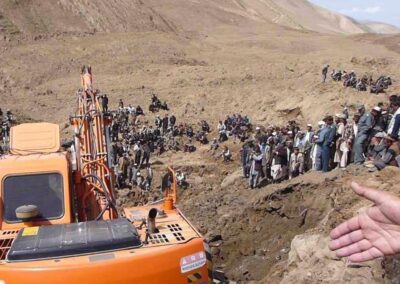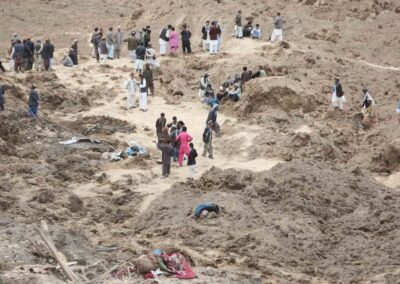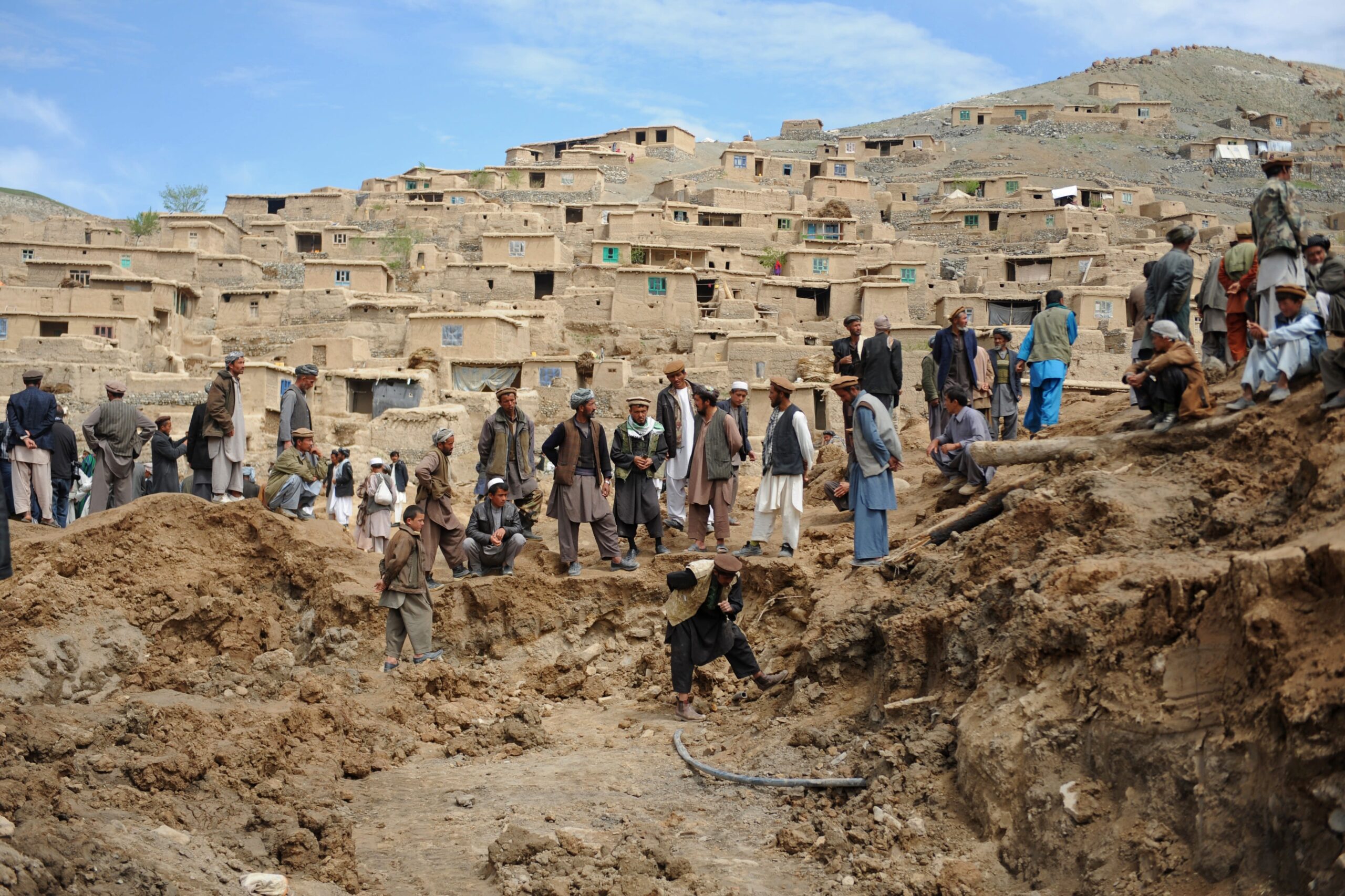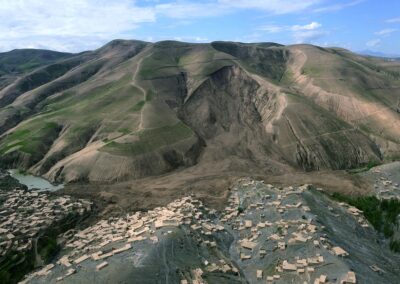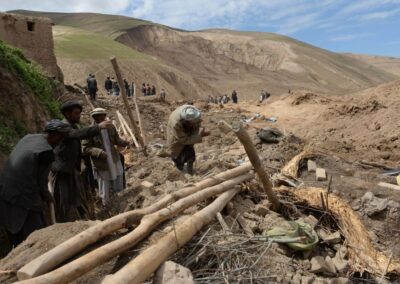Hundreds of Afghans Are Killed in Landslides
Huge landslides caused by heavy rainfall buried hundreds of houses in a remote area of northeastern Afghanistan on Friday. As many as 2,500 people were said to be missing in the disaster, one of the worst to hit the war-torn country in at least a decade.
Weeks of steady rain softened the hillside above the village of Abi Barak in the Argo district of Badakhshan Province, near the borders with China and Tajikistan. Officials said one part of the hill gave way around 11 a.m., burying about 300 houses — by some estimates nearly half the village — in a mass of sodden mud. Neighbors who rushed to help were buried when a second part of the hill slid a short time later.
“I believe it is beyond human capability to even remove all of the dead bodies,” said Shah Waliullah Adeeb, the governor of Badakhshan. “It will take months for machinery to complete the search for bodies.”
Initial reports on the toll from the landslides were sketchy. Government officials said that up to 2,500 people could have been buried. The United Nations said late on Friday that the death toll was at least 350.
The extent of the devastation was also unclear, in part because it was difficult to communicate with the area because the landslides had knocked down cellphone towers, officials said.
Aid efforts began almost immediately. Surviving villagers were moved to neighboring areas for safety. President Hamid Karzai ordered his second vice president, as well as the army, the directorate of local government and officials in Badakhshan, to take every available action to aid the affected families.
From the White House Rose Garden, President Obama said, “Just as the United States has stood with the people of Afghanistan through a difficult decade, we stand ready to help our Afghan partners as they respond to this disaster.”
The United Nations, which is helping coordinate the relief effort, said that humanitarian supplies in the area were adequate and that emergency funds would be available if more was needed. Afghan officials said that 130 tons of flour, 60 tons of rice and 10 tons of sugar were headed to the area and that senior officials would fly there on Saturday with cash to aid displaced families.
Natural disasters are a particularly cruel feature of life in Afghanistan, which is already contending with a deadly insurgency, crippling poverty and a flagging economy. Avalanches, floods and landslides claim dozens of lives each year.
“There have now been more Afghans killed through natural disasters in the past seven days than all of 2013,” said Mark Bowden, the United Nations humanitarian coordinator in Afghanistan.
With some areas difficult to reach, the extent of the damage from the landslides on Friday may not be known for some time, the organization said.
The northern part of the country has been plagued by flooding in recent weeks, with more than 100 people dead or missing and thousands displaced before Friday. Officials said that villages in the Argo district and elsewhere remained at risk for landslides, and the government was working to evacuate the most vulnerable residents to temporary housing in tents, while heavy equipment was moved to Abi Barak.
“We have sent five loaders and excavators to the village to remove the dirt and bring out the bodies and rescue the potential survivors,” said Wais Barmak, the Afghan minister of rural rehabilitation and development and deputy head of natural disaster management. “This disaster is unprecedented, at least in the last few

